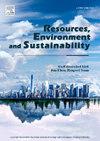Graph-based machine learning for high-resolution assessment of pedestrian-weighted exposure to air pollution
IF 12.4
Q1 ENVIRONMENTAL SCIENCES
引用次数: 0
Abstract
Pedestrians are particularly vulnerable to air pollution due to their proximity to pollutant sources and elevated respiratory rates during physical activity, amplifying cumulative health risks. However, existing studies focus on concentration- or residence-based exposure assessment, overlooking the dynamic interaction between pollution patterns and pedestrian activity. This study therefore introduces a novel methodological framework to assess pedestrian-specific exposure to PM2.5 in diverse urban environments. Applied to New York City, the framework leverages graph-based machine learning to predict street-level PM2.5 concentrations from vehicle-sensed pollution data, while estimating high-resolution pedestrian volume derived from street view imagery and ground-truth count data. The results reveal significant divergences between traditional exposure assessments and pedestrian-specific exposure patterns, uncovering previously overlooked high-risk zones. High-exposure hotspots are not limited to areas with elevated pollution levels but also include locations where moderate pollution coincides with high pedestrian activity. This study also explores the spatial relationship between exposure patterns and urban vegetation coverage, providing actionable insights for targeted interventions. By bridging the gap between pollution dynamics and pedestrian activity, this research provides urban planners and policymakers with new insights for developing pedestrian-centered air quality management strategies, contributing to healthier and more sustainable urban environments.

基于图形的机器学习,用于行人加权空气污染暴露的高分辨率评估
行人特别容易受到空气污染的影响,因为他们靠近污染源,而且在身体活动期间呼吸频率升高,从而加大了累积的健康风险。然而,现有的研究侧重于以浓度或居住地为基础的暴露评估,忽视了污染模式与行人活动之间的动态相互作用。因此,本研究引入了一种新的方法框架来评估不同城市环境中行人对PM2.5的特定暴露。该框架应用于纽约市,利用基于图形的机器学习,从车辆感知的污染数据中预测街道PM2.5浓度,同时从街景图像和地面真实计数数据中估计高分辨率行人量。结果揭示了传统暴露评估和行人特定暴露模式之间的显著差异,揭示了以前被忽视的高风险区域。高暴露热点不仅限于污染水平高的地区,还包括中度污染与行人活动频繁的地区。本研究还探讨了暴露模式与城市植被覆盖之间的空间关系,为有针对性的干预措施提供了可操作的见解。通过弥合污染动态和行人活动之间的差距,本研究为城市规划者和决策者提供了新的见解,以制定以行人为中心的空气质量管理策略,为更健康、更可持续的城市环境做出贡献。
本文章由计算机程序翻译,如有差异,请以英文原文为准。
求助全文
约1分钟内获得全文
求助全文
来源期刊

Resources Environment and Sustainability
Environmental Science-Environmental Science (miscellaneous)
CiteScore
15.10
自引率
0.00%
发文量
41
审稿时长
33 days
 求助内容:
求助内容: 应助结果提醒方式:
应助结果提醒方式:


